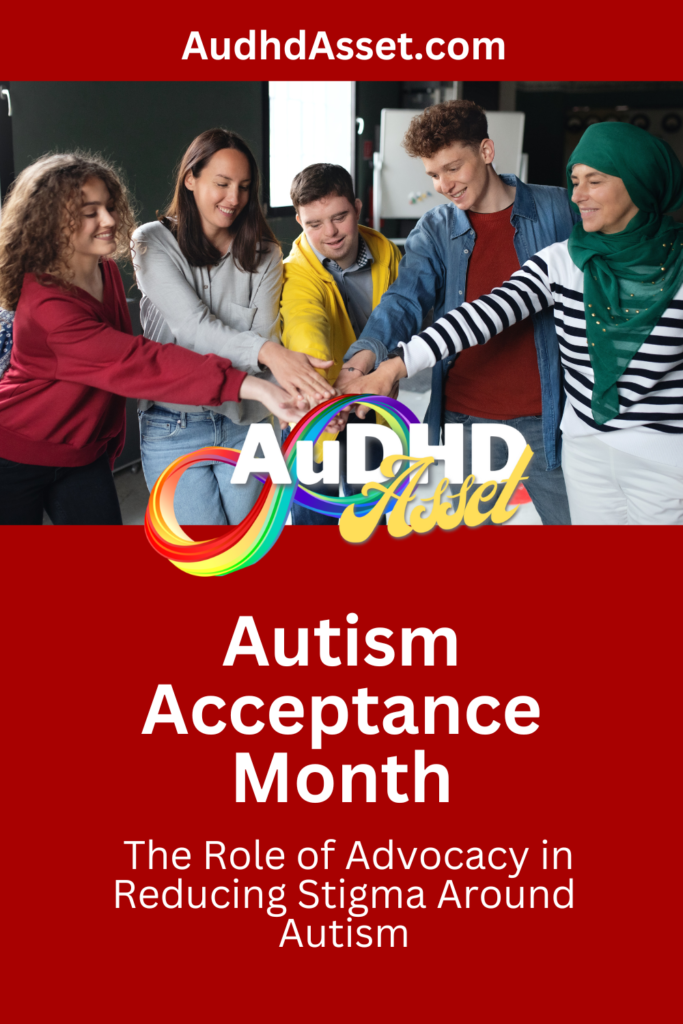Autism Acceptance Month takes place every April. The goal for the month is to promote understanding, acceptance, and inclusion of autistic individuals. The focus has shifted from just raising awareness to fostering a more inclusive and supportive society for the autistic community. Rather than viewing autism as something that needs to be fixed or cured, the emphasis is on accepting and appreciating the diversity of neurological experiences.
 Why is it important to understand autism?
Why is it important to understand autism?
To truly understand why Autism Acceptance Month is important we need to understand some historical context around autism. The term “autism” was first introduced by psychiatrist Eugen Bleuler in the early 20th century, but it was not until the 1940s that Dr Leo Kanner and Dr. Hans Asperger independently identified and described the characteristics of autism.
In the mid-20th century, there was a trend towards institutionalizing individuals with developmental disabilities, including autism. When individuals were isolated from mainstream society it further broadened the lack of understanding and acceptance towards those individuals.
The late 20th century saw a significant shift towards parental advocacy. Parents fought for better understanding, appropriate education, and improved support services. In the 1990s and early 2000s, the autism rights movement gained momentum. Led by autistic individuals, this movement focused on promoting acceptance, advocating for equal rights, and challenging the medical model that pathologized autism.
Today, autism advocacy continues to evolve, emphasizing the importance of creating a more inclusive and supportive society. With historical context we can highlight progress made in recognizing the rights and unique contributions of autistic individuals, while also emphasizing the ongoing challenges that advocacy seeks to address.
How Personal Experiences Shape Perspectives on Autism
How does inclusion and having personal experiences with autistic individuals shape our perspectives on Autism? Inclusion positively impacts both the individuals themselves and society as a whole. But this inclusion should be seen across the spectrum and individuals should meet others with an open mind.
Understanding Neurodiversity
Neurodiversity is a concept that recognizes and celebrates the natural diversity of the human brain and various ways individuals experience the world. It challenges the traditional view that certain neurological conditions, such as autism, ADHD, dyslexia, and others, are inherently abnormal and pathological.
While autism is often associated with the neurodiversity movement, it extends beyond autism to encompass various neurological conditions. The focus is on accepting and appreciating the full spectrum of neurodivergent experiences.
 Advocacy as a Catalyst for Change
Advocacy as a Catalyst for Change
Advocacy serves as a powerful catalyst for change as it contributes to shifts in public attitudes, policies, and societal norms. Advocacy challenges stereotypes and misconceptions, fostering a more accurate and nuanced understanding of Autism and neurodiversity.
Advocacy strives to promote inclusivity and equality by highlighting disparities, advocating for the rights of marginalized groups, and challenging systemic barriers. Through these efforts, advocates work towards creating a more just and equitable society. Advocacy empowers individuals and communities to speak up for their rights and needs.
Autism Advocacy Initiatives
Several advocacy initiatives around autism have made significant strides into raising awareness, promoting understanding, and advocating for the rights of autistic individuals.
- Autistic Self Advocacy Network (ASAN): ASAN is a prominent organization run by and for autistic individuals. They focus on empowering self-advocacy, promoting the rights of individuals with autism, and challenging stereotypes.
- Various advocacy groups and organizations focus on promoting employment opportunities for autistic individuals. Programs like Autism at Work by companies such as Microsoft, SAP, and IBM aim to create inclusive workplaces and demonstrate the value of neurodiversity in the workforce.
- The #RedInstead Campaign emerged as a response to the traditional use of blue as the color associated with Autism Awareness. Advocates and individuals with autism use the color red to signify acceptance, challenging stereotypes and promoting the idea that autism should be celebrated, not just acknowledged.
- Sesame Street’s Julia Character: Sesame Street introduced Julia, an autistic muppet to their cast. This initiative aims to teach young audiences about autism in a positive and inclusive way, fostering understanding and empathy.
- Autistic Pride Day, celebrated on June 18th, is an initiative that promotes the idea of pride in being autistic. It emphasizes self-acceptance and challenges negative perceptions associated with autism.
Breaking Down Stigmas
Breaking down stigmas around autism is crucial for fostering understanding and inclusivity. There are several common misconceptions and stereotypes that contribute to the stigma surrounding autism. Major stigmas around autism that hinder autistic individuals include believing autistic people lack empathy, savantism is a norm, people grow out of being autistic, all autistic people exhibit similar behaviors, and others.
How do these misconceptions and many other stigmas hinder autistic individuals? Stigma can result in social isolation when autistic individuals feel marginalized or misunderstood, leading to lack of meaningful connections. Stigmatizing attitudes can limit educational and employment opportunities. The internalized stigma can contribute to mental health challenges, such as anxiety and depression. Stigma may also discourage individuals from seeking appropriate healthcare, exacerbating existing health issues or preventing timely intervention.
Promoting Inclusivity
Promoting inclusivity for autistic individuals is essential to creating a more understanding and supportive society. This can include education and awareness, promoting acceptance and understanding, creating inclusive environments, implementing training and sensitivity programs, creating inclusive educational environments, creating workplace policies that are inclusive and accommodating, advocating for accessibility, ensuring supportive healthcare services, promoting social inclusion, listening to autistic voices, and celebrating neurodiversity.
 The Power of Personal Stories
The Power of Personal Stories
Listening to autistic voices and sharing their personal stories is a powerful way to promote acceptance and understanding. Personal stories humanize the experiences of autistic individuals. When allowed to share their stories, autistic individuals can become more than a diagnosis but become real people with unique perspectives, emotions, and life stories.
Autistic individuals have diverse experiences, strengths, and challenges. Personal stories evoke empathy and provide insights into the sensory sensitivities, communication styles, and social dynamics that individuals with autism navigate.
Personal stories challenge stereotypes and stigmas associated with Autism. By sharing authentic experiences, individuals can debunk myths and misconceptions, contributing to a more accurate and nuanced understanding.
Resources and Support
There are numerous resources available for autistic individuals and their families to access support, information, and services.
- Some resource can be found within organizations such as Autism Self Advocacy Network (ASAN)
- Local and online support groups provide opportunities for autistic individuals and their families to connect
- Websites like ASAN provide educational materials, toolkits, and guides.
- Local healthcare professionals, schools and organizations can provide therapeutics services such as speech therapy and occupational therapy.
- Early intervention programs, educational support, vocational training, and disability benefits are often government-funded programs and services.
- Assistive technology tools and apps can support communication and daily living skills.
- Legal advocacy organizations can provide guidance and support in navigating disability rights, special education laws, and access to accommodations.
- There are numerous books written by autistic authors, professionals, and advocates that provide insights into the autistic experience.
- And so much more……
If you have a specific resource that has helped you or your family please let us know.
Challenges and Progress
Acknowledging the challenges faced by autistic individuals is a crucial step towards promoting acceptance, fostering empathy, combating stigma, and creating more inclusive and supportive environments for all. The progress made in autistic and neurodiversity advocacy shows how these steps have put us on the right path, but there’s still a far way to go in order to create an inclusive and accepting environment and society for autistic individuals.
We encourage readers to actively participate in Autism Acceptance Month.
Participating in a meaningful way to show support for autistic individuals can be educating yourself, promoting acceptance, and listening to autistic voices. Support autism organizations that are actively helping autistic individuals and families above all else. You can attend events and workshops that’ll provide an opportunity to learn and connect with the autistic community. Offer support to the autistic individuals in your life and speak up against stigma, discrimination, and harmful stereotypes associated with autism. Above all else, actively include autistic individuals in social activities, conversations, and decision-making processes.
By actively participating in Autism Acceptance Month, you can contribute to creating a more inclusive, understanding, and accepting society for autistic individuals and their families.


